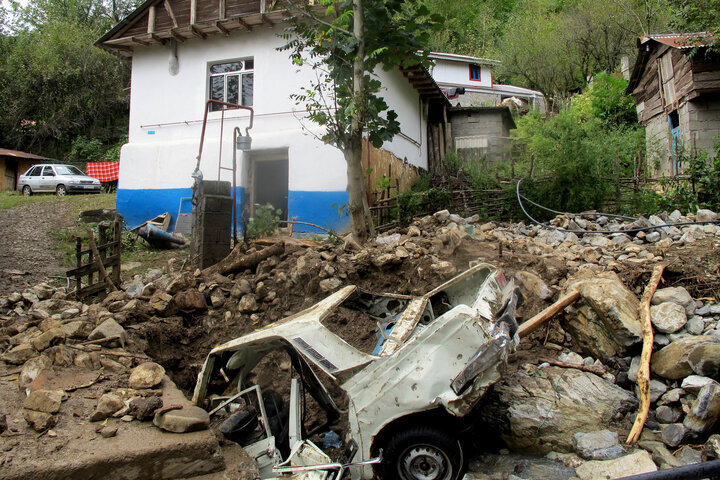Climate change accounts for 75% of accidents in Iran

TEHRAN – Over the past twenty years, the share of climate change in accidents taking place in the country has increased from 35 percent to 75 percent.
Mostafa Mohaghegh, the senior coordinator at the Asia and Pacific Centre for Development of Disaster Information Management (UNESCAP-APDIM), said a strategic plan is being prepared for dealing with accidents that are rooted in climate change.
The plan has the three topics of identifying the accidents, offering educational services to people, and protecting the rights of vulnerable strata of the society, IRNA reported on Thursday.
Last year, Mohaghegh said arid and semi-arid countries, like Iran, should prepare plans for social and economic development based on the climate change goals.
According to the World Meteorological Organization's multiannual forecast, in the next five years, Iran’s average rainfall will decline by 75 percent.Iran has been suffering droughts for decades. It has been expedited over the last three decades.
The plateau of Iran is a chief victim of global warming and its main culprits have been pumping gas emissions into the atmosphere through their unclean technology.
According to the World Meteorological Organization's multiannual forecast, in the next five years, Iran’s average rainfall will decline by 75 percent, and the temperature rises by 50-75 percent compared to the long-term average.
The United Nations Intergovernmental Panel on Climate Change has reported that human influence has warmed the atmosphere, ocean, and land and has found that changes to the climate system at an unprecedented scale have occurred in every region across the globe.
The report assesses that global surface temperature will continue to increase until at least the mid-century under all emissions scenarios considered.
In particular, the report concludes that global warming of 1.5°C and 2°C will be exceeded during the 21st century unless deep reductions in CO2 and other greenhouse gas emissions are made in the coming decades.
Reza Shahbazi, deputy head of Geological Survey and Mineral Exploration said in January that over the past 23 years, climate change has led to dryness of lakes and wetlands, land subsidence, sand and dust storms, air pollution, and some other predicaments in Iran.
The consequences of industrial life in the country caused a special condition that when heavy rainfall begins, the lands being unable to absorb it, flooding rages across the county, he added.
Iran is currently in a period of prolonged drought, yet during this period occasionally experienced heavy rainfall over short periods of time, Shahbazi noted.
“Examination of indicators such as rainfall, the difference with long-term averages, and evaporation rate, shows that our country has been in a period of drought since 1998, however, over some years, normal averages of rainfall poured over the country.”
MG
Leave a Comment